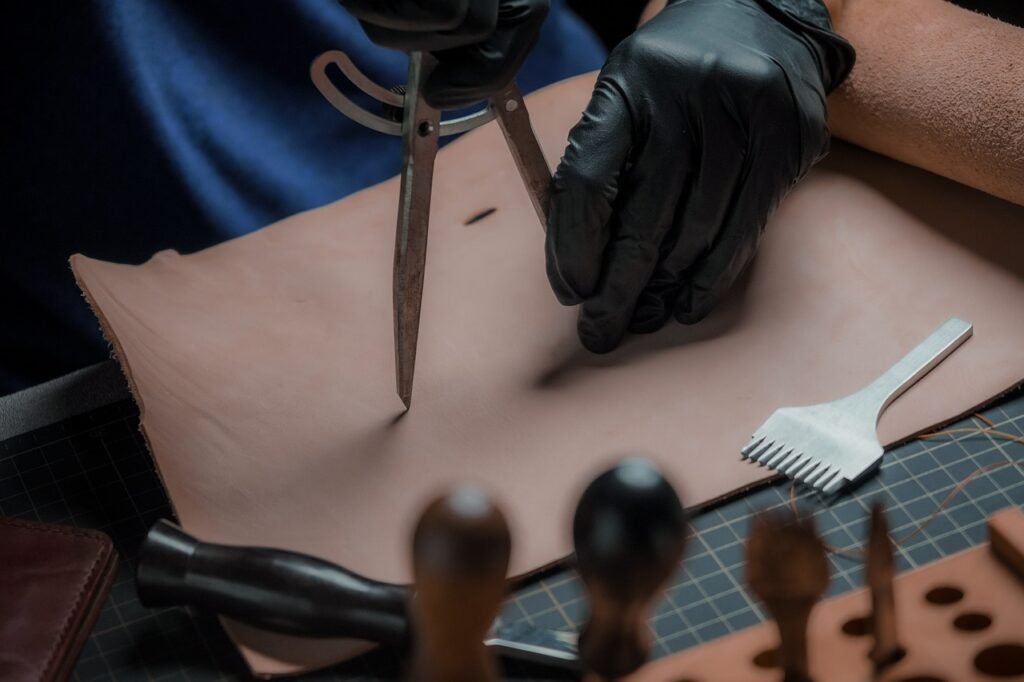Welcome to the fascinating world of innovative approaches to leather tanning and coloring! In this article, you will explore cutting-edge techniques and methods that are revolutionizing the way leather is processed and dyed. From environmentally friendly practices to advanced technologies, these innovations are not only enhancing the quality of leather products but also reducing the impact on the environment. Get ready to be inspired by the creativity and ingenuity of the leather industry! Have you ever wondered about the process behind turning raw animal hides into beautifully colored and textured leather goods? In this article, we will explore innovative approaches to leather tanning and coloring, diving into the latest technologies and methods that are revolutionizing the industry. From sustainable practices to cutting-edge techniques, you will discover how leather is transformed into a versatile and durable material that is used in a wide range of products.

This image is property of pixabay.com.
Sustainable Leather Tanning Methods
When it comes to leather production, sustainability is an increasingly important consideration. The traditional method of chrome tanning, which uses chromium salts to tan the leather, can have harmful environmental impacts if not properly managed. However, innovative approaches to leather tanning are now prioritizing eco-friendly practices that minimize waste and reduce the use of harmful chemicals.
Vegetable Tanning
One of the most sustainable leather tanning methods is vegetable tanning, which uses tannins extracted from plant sources such as tree bark, fruits, and leaves. This natural tanning process is known for producing leather that is resilient, flexible, and ages beautifully over time. Additionally, vegetable tanning eliminates the need for harsh chemicals, making it a popular choice for environmentally conscious consumers.
Chrome-Free Tanning
Another sustainable alternative to chrome tanning is chrome-free tanning, which uses alternative tanning agents such as synthetic tanning agents or vegetable extracts. This method reduces the environmental impact of leather production by eliminating the use of chromium salts, which can be harmful to both the environment and human health. Chrome-free tanned leather retains the natural qualities of the hide while minimizing the use of chemicals, making it a more eco-friendly option.
Waterless Tanning
Waterless tanning is a revolutionary approach to leather tanning that eliminates the need for large volumes of water typically used in traditional tanning processes. By utilizing innovative techniques such as dry tanning or solvent-based tanning, waterless tanning reduces water consumption and minimizes the risk of water pollution. This eco-friendly method is gaining popularity among leather manufacturers seeking to reduce their environmental footprint.
Advanced Leather Coloring Techniques
In addition to sustainable tanning methods, advancements in leather coloring techniques have also contributed to the evolution of the leather industry. From natural dyes to high-tech finishes, innovative approaches to leather coloring are enhancing the aesthetic appeal and durability of leather products.
Natural Dyeing
Natural dyeing is a centuries-old technique that involves using plant-based or animal-based dyes to color leather. This environmentally friendly method produces rich, earthy hues that are more subtle and nuanced than synthetic dyes. Natural dyeing not only enhances the natural beauty of leather but also reduces the use of harmful chemicals, making it a preferred choice for those seeking a more sustainable option.
Aniline Dyeing
Aniline dyeing is a modern coloring technique that involves using transparent dyes to penetrate the leather, allowing the natural grain and markings of the hide to show through. This creates a luxurious, natural appearance that is highly prized in the leather industry. Aniline-dyed leather is known for its soft, supple texture and rich color saturation, making it a popular choice for high-end leather goods.
Metallic Finishes
Metallic finishes are a cutting-edge coloring technique that adds a touch of glamour and sophistication to leather products. By using metallic pigments and coatings, manufacturers can create leather with a lustrous, metallic sheen that catches the light and adds dimension to the material. Metallic finishes are popular in fashion and accessories, adding a modern twist to classic leather goods.

This image is property of pixabay.com.
Nanotechnology in Leather Production
Nanotechnology is revolutionizing various industries, including leather production. By harnessing the power of nanomaterials, leather manufacturers are able to enhance the performance, durability, and aesthetic qualities of leather products. From stain-resistant finishes to anti-bacterial properties, nanotechnology is shaping the future of leather production in exciting new ways.
Nano-Coatings
Nano-coatings are ultra-thin protective layers applied to leather surfaces using nanotechnology. These coatings provide water and stain resistance, UV protection, and enhanced durability without compromising the natural look and feel of the leather. Nano-coated leather is easy to clean, resists wear and tear, and maintains its original appearance for longer periods, making it an ideal choice for high-traffic leather goods.
Anti-Microbial Leather
Anti-microbial leather is a groundbreaking innovation that incorporates nanoscale additives to inhibit the growth of bacteria and fungi on the leather surface. This technology helps prevent odors, stains, and deterioration caused by microbial activity, resulting in cleaner, more hygienic leather products. Anti-microbial leather is particularly useful in applications such as upholstery, automotive interiors, and medical equipment where cleanliness is essential.
Smart Leather
Smart leather is a new frontier in leather production that integrates nanotechnology sensors and devices into leather products. By embedding nano-sized sensors and conductive materials into the leather, manufacturers can create leather goods with advanced functionalities such as temperature regulation, moisture detection, and interactive capabilities. Smart leather opens up a world of possibilities for innovative products that blend technology with traditional craftsmanship.
Conclusion
Innovative approaches to leather tanning and coloring are transforming the leather industry, paving the way for sustainable practices, advanced techniques, and cutting-edge technologies. From vegetable tanning to metallic finishes to nanotechnology applications, the possibilities for creating high-quality, eco-friendly leather products are endless. By embracing these innovations, manufacturers can produce leather goods that are not only beautiful and durable but also environmentally conscious and technologically advanced. Next time you admire a leather bag, jacket, or pair of shoes, you’ll have a newfound appreciation for the innovative processes that went into creating them.
